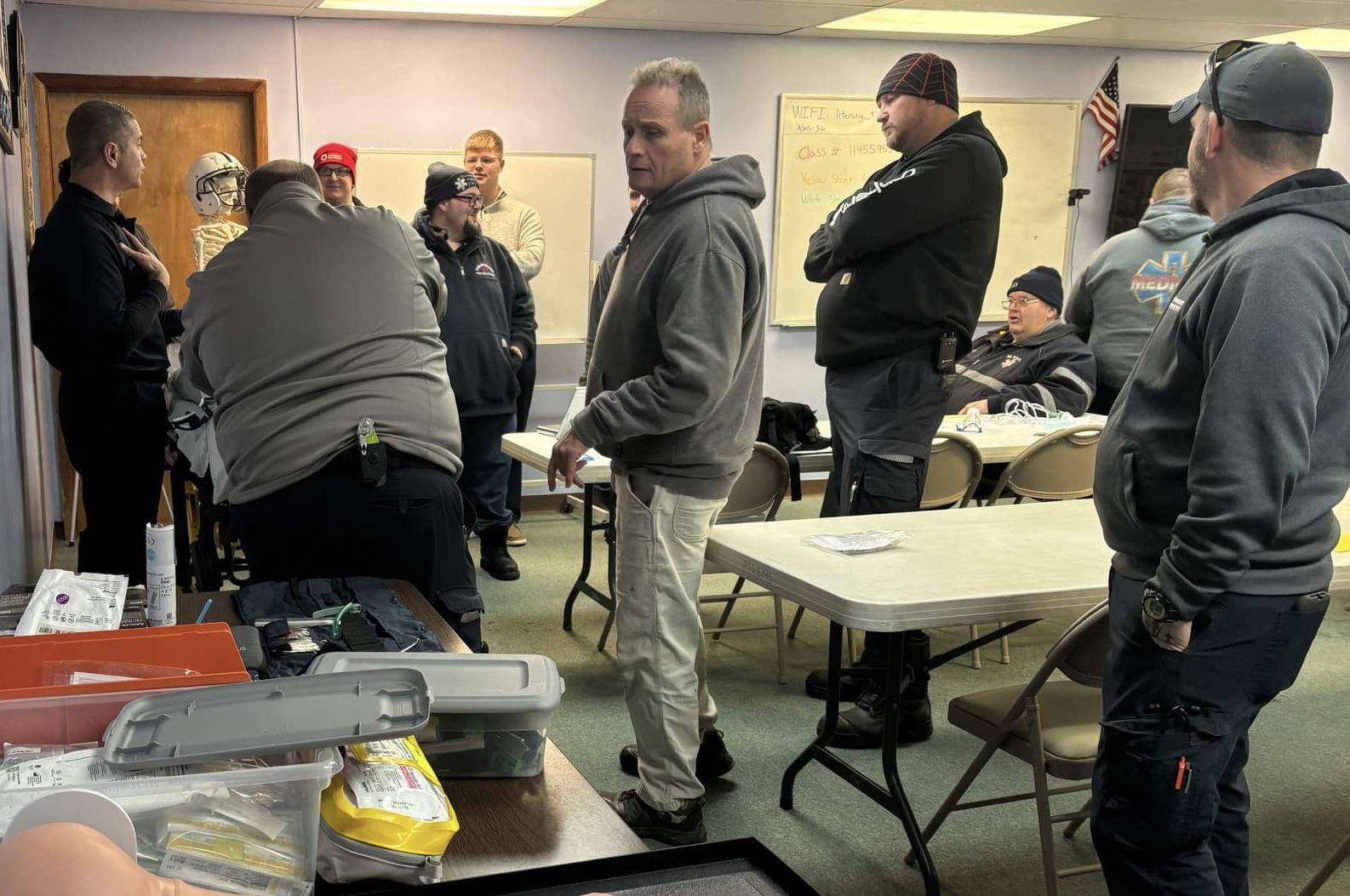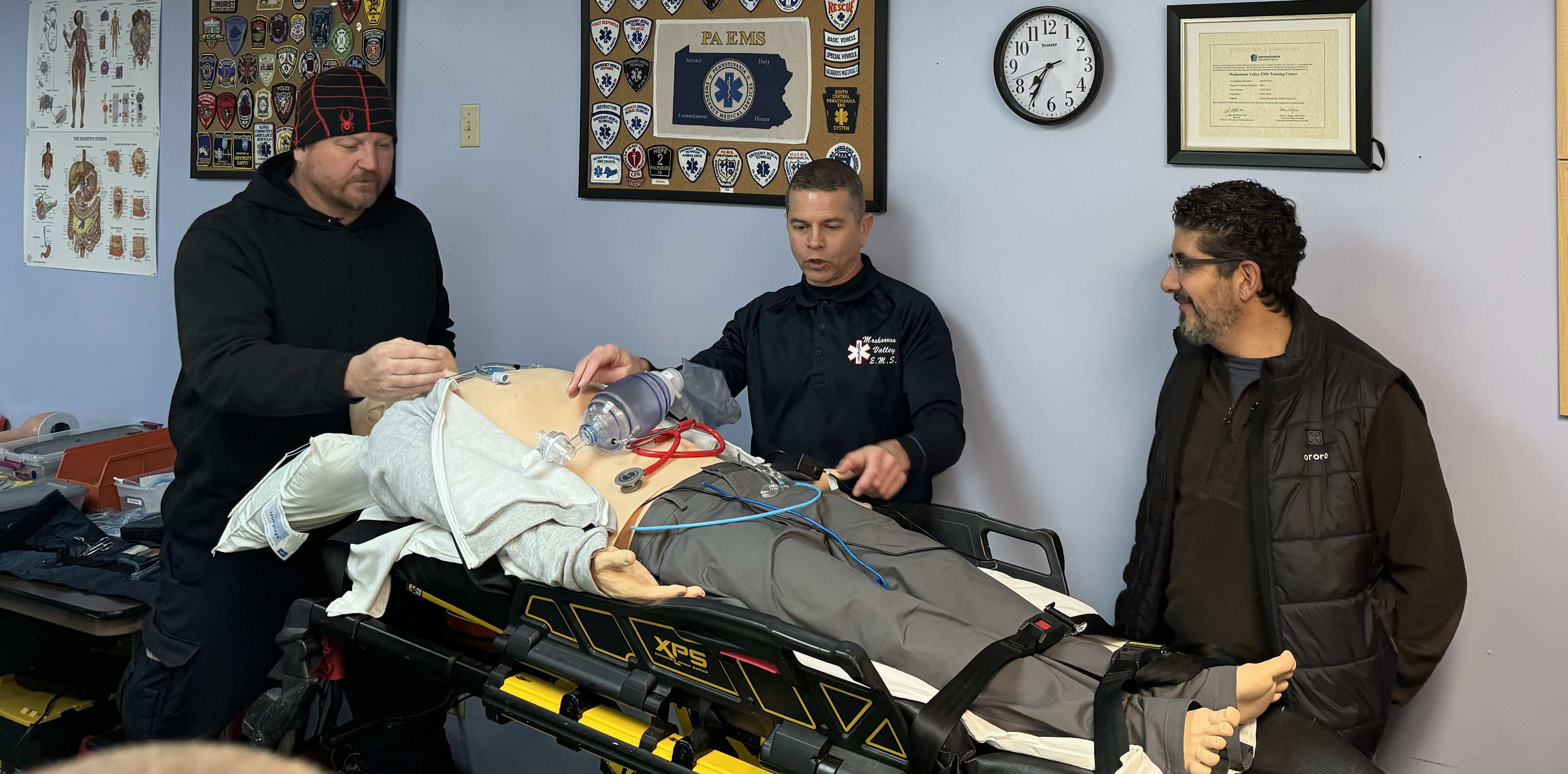Continuing Education - MVEMS Skills Review 1/16/2025
On January 16th, our Medical Director, Dr. J. Elias, and MVEMS clinicians gathered for our first skills review of 2025. Our EMTs focused on key aspects of Basic Life Support (BLS) airway management, including the proper use of Bag-Valve-Mask (BVM) devices, indications and contraindications for airway management, the operation of AEDs (specifically the models used on our units), and the use of nebulizers.
In particular, the use of nebulizers is critical in treating patients with respiratory distress, especially those with conditions such as asthma, COPD, or other chronic respiratory illnesses. A nebulizer is a medical device that turns liquid medication into a fine mist, which can be inhaled directly into the lungs. This helps open the airways, making it easier for patients to breathe. Our providers are trained to administer nebulizer treatments on-site to provide immediate relief during a respiratory emergency, helping stabilize patients before they reach the hospital. As we are in the heart of respiratory virus season, it's important that our crew members are ready to handle these situations.

Meanwhile, our Advanced Life Support (ALS) providers conducted an in-depth review of advanced airway interventions. This included discussions on the indications, techniques, and equipment involved in the following procedures:
- Endotracheal Intubation: A procedure in which a tube is inserted into the patient's trachea through the mouth to assist with ventilation.
- Supraglottic Airway Devices: A tube inserted above the vocal cords, offering a quicker airway solution in high-pressure environments.
- Cricothyrotomy: A surgical procedure performed by paramedics and higher-level providers, which involves creating an incision through the cricothyroid membrane to establish an airway directly into the trachea. This is typically used when endotracheal intubation is not feasible due to severe facial trauma or airway obstruction

It is important to note that these critical procedures are often performed in challenging environments, such as the back of an ambulance traveling at high speeds. At MVEMS, we hold our clinicians to a high standard to ensure that you and your family receive the best possible care—whenever and wherever you need it. We plan to continue these skills review quarterly to ensure our clinicians are kept up to date with the latest changes.
As always, we thank you for your continued support to Moshannon Valley EMS.